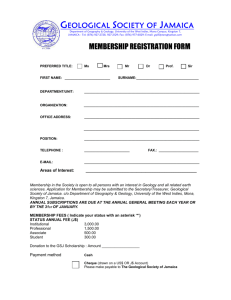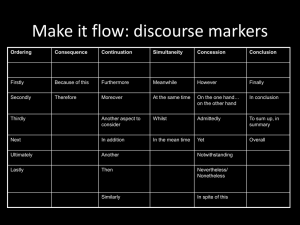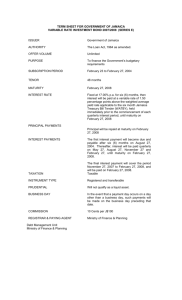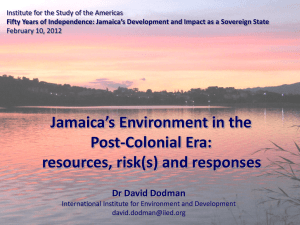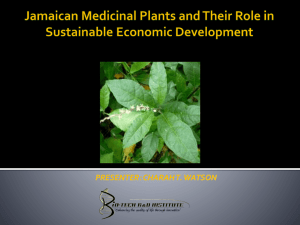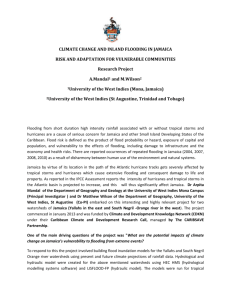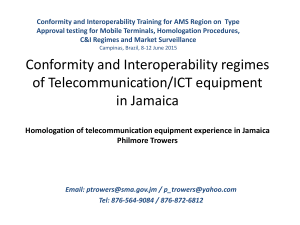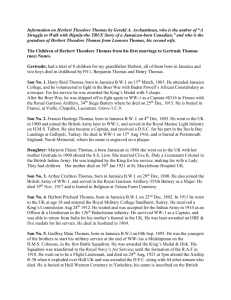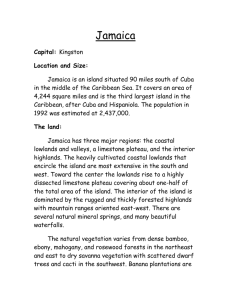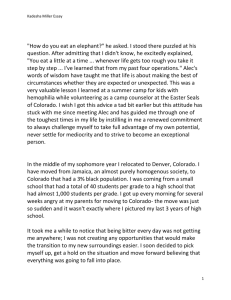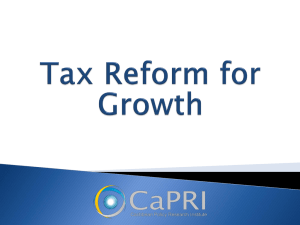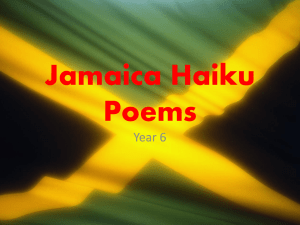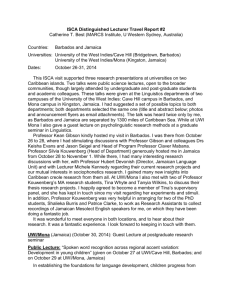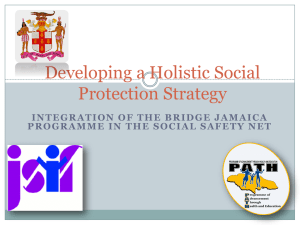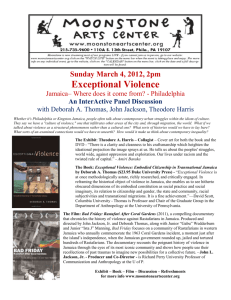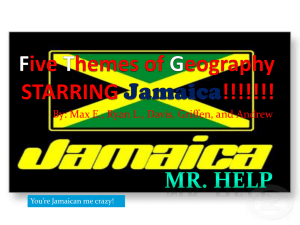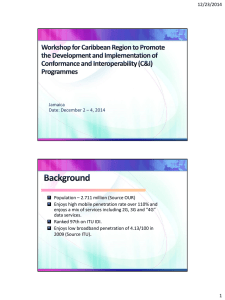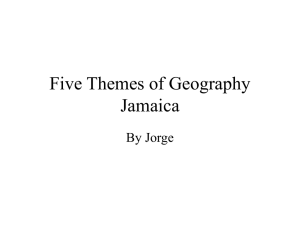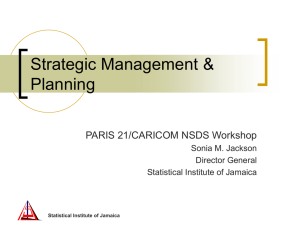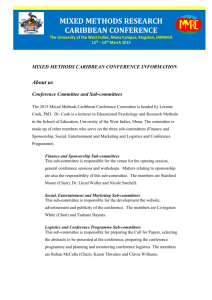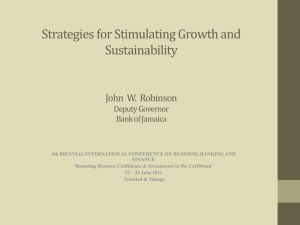Copyright and Access to Information in the context of higher
advertisement
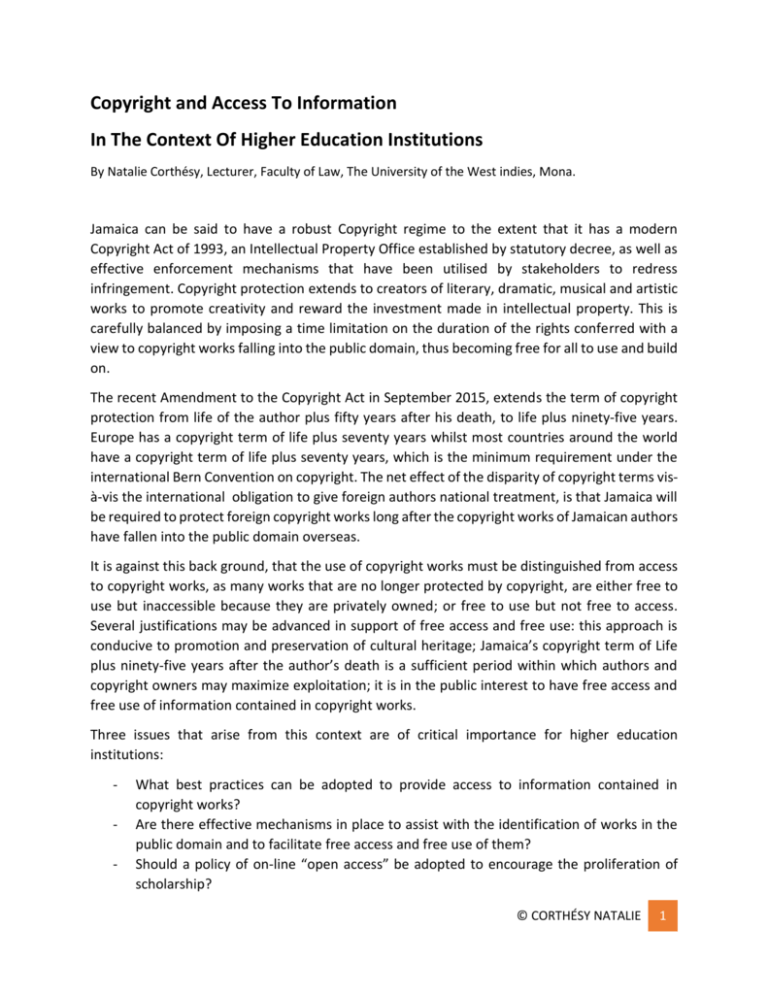
Copyright and Access To Information In The Context Of Higher Education Institutions By Natalie Corthésy, Lecturer, Faculty of Law, The University of the West indies, Mona. Jamaica can be said to have a robust Copyright regime to the extent that it has a modern Copyright Act of 1993, an Intellectual Property Office established by statutory decree, as well as effective enforcement mechanisms that have been utilised by stakeholders to redress infringement. Copyright protection extends to creators of literary, dramatic, musical and artistic works to promote creativity and reward the investment made in intellectual property. This is carefully balanced by imposing a time limitation on the duration of the rights conferred with a view to copyright works falling into the public domain, thus becoming free for all to use and build on. The recent Amendment to the Copyright Act in September 2015, extends the term of copyright protection from life of the author plus fifty years after his death, to life plus ninety-five years. Europe has a copyright term of life plus seventy years whilst most countries around the world have a copyright term of life plus seventy years, which is the minimum requirement under the international Bern Convention on copyright. The net effect of the disparity of copyright terms visà-vis the international obligation to give foreign authors national treatment, is that Jamaica will be required to protect foreign copyright works long after the copyright works of Jamaican authors have fallen into the public domain overseas. It is against this back ground, that the use of copyright works must be distinguished from access to copyright works, as many works that are no longer protected by copyright, are either free to use but inaccessible because they are privately owned; or free to use but not free to access. Several justifications may be advanced in support of free access and free use: this approach is conducive to promotion and preservation of cultural heritage; Jamaica’s copyright term of Life plus ninety-five years after the author’s death is a sufficient period within which authors and copyright owners may maximize exploitation; it is in the public interest to have free access and free use of information contained in copyright works. Three issues that arise from this context are of critical importance for higher education institutions: - What best practices can be adopted to provide access to information contained in copyright works? Are there effective mechanisms in place to assist with the identification of works in the public domain and to facilitate free access and free use of them? Should a policy of on-line “open access” be adopted to encourage the proliferation of scholarship? © CORTHÉSY NATALIE 1 Access to information contained in copyright works This objective can be achieved using a twofold approach. Firstly, ensuring libraries are well supplied with relevant and up to date books, journals and other reference materials is relatively easy. However, budgetary constraints invariably curtail their variety and quantum creating excess demand for access to these resources. Secondly, a licence agreement, such as that negotiated between The University of the West Indies Mona and The Jamaica Copyright Licensing Agency, facilitates the photocopying of copyright works that would otherwise be a breach of the exclusive reprographic rights of copyright owners under the copyright law. The technicality of how this agreement works can be simplified thus: users are free to access but restricted in their ability to photocopy. Identification of works in the public domain Two mechanisms come readily into focus. Firstly, conducting an IP audit is imperative and it is also not difficult to do. The potential for economic profit that the exploitation of this rich resource base represents, quickly whittles away the financial constraints argument against conducting an audit. The publication and republication of academic treasures to be found in the libraries of the university is nothing more and nothing less than an exercise of writing our own stories and creating brand new second hand intellectual property rights. Secondly, copyright owners can be offered incentives to put their work in the public domain prior to the natural expiration of copyright protection. Universities typically expend a lot of effort into asking alumni to donate money to their alma mata. Why not ask them to donate their copyright works? Open Access Why would a university lecturer who, being himself an author and owner of copyright work, wish to allow his colleagues and students to have open access to his work on-line? Arguably, the lower the threshold of difficulty to access a work, the more likely it is to be used and cited. On the other hand, does on-line open access mean that users will download perfect copies of the entire copyright work, with no remuneration returning to the author because nobody will bother to purchase the printed book? In other words, are citations worth their weight in royalties to a professional academic author? One would expect this question to be answered differently across disciplines. © CORTHÉSY NATALIE 2
